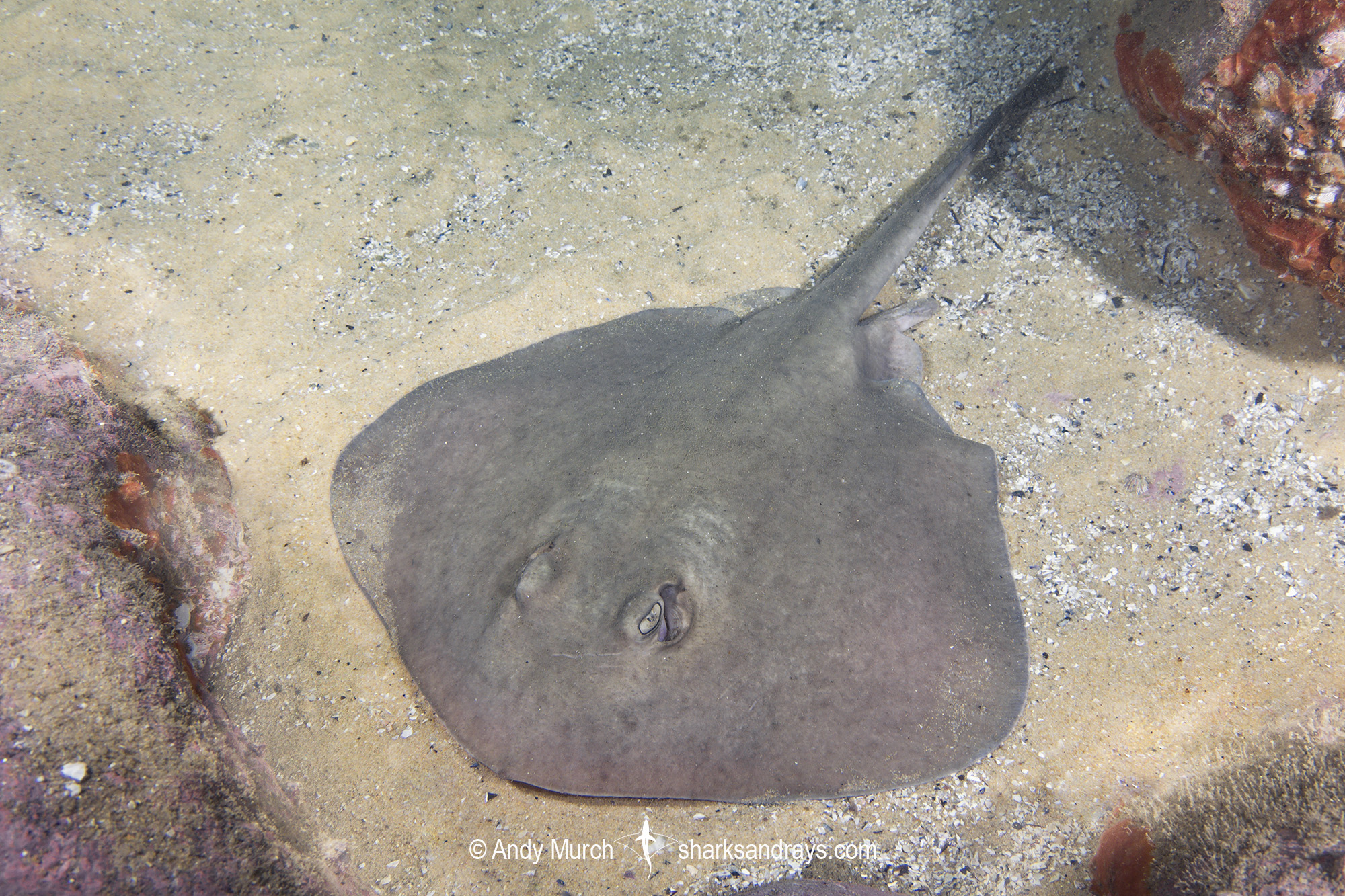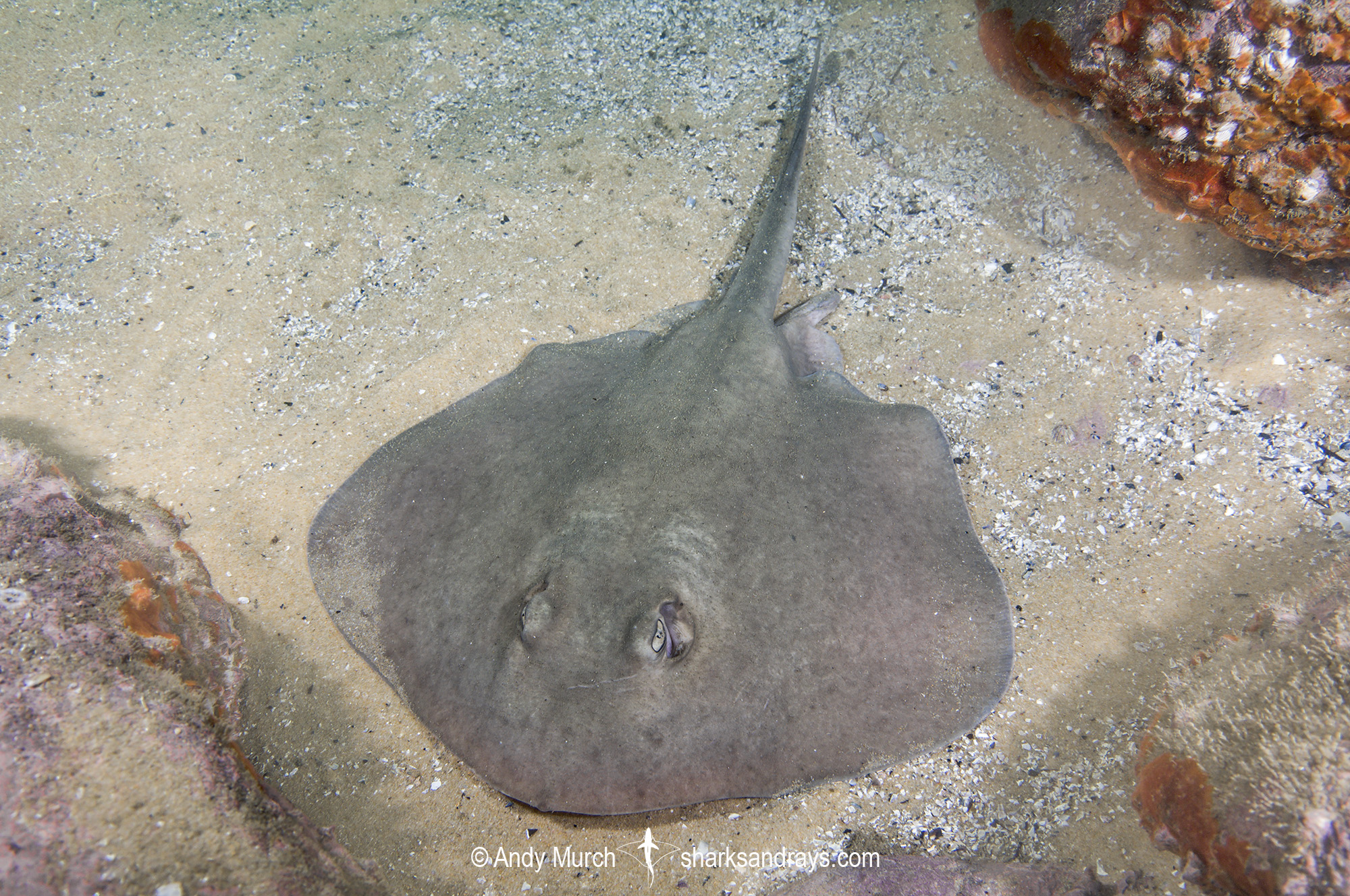Common names
Eastern Shovelnose Stingaree.
Bionomial
Trygonoptera imitata.
Synonyms
None.
Identification
A large stingaree with a rounded kite-shaped disc that is slightly wider than long. Snout broadly rounded or obtusely angular, without an extended tip. Anterior margins of disc mildly convex, apices broadly rounded. Disc completely smooth.
Eyes medium-sized; orbit length 0.2-0.23 x snout length. Spiracle origin below anterior half of eye. Mouth small. Six oral papillae on mouth floor. Nasal curtain skirt shaped, not extended into a distinct lobe, posterior margin heavily fringed. Broad, fleshy lateral-posterior lobe present on each nostril.
Tail 0.81-0.89 x disc length, oval in cross-section, depressed anteriorly. Dorsal fin absent. Caudal fin relatively large and deep.
Colour
Dorsum brown, dark brown, or occasionally yellowish, often with small dark or pale flecks. Dorsum may be darker centrally. Caudal lobe dusky. Ventrum white with a broad grey/brown margin.
Size
Total length at least 80cm. Length at birth approximately 20cm.

Conservation Status
LEAST CONCERN
Although the Eastern Shovelnose Stingaree is taken as bycatch in ground fisheries off of southeast Australia, fishing effort is limited and the population appears to be abundant.

Habitat
Temperate seas. Found on sandy and muddy substrates, often adjacent to rocky reefs and/or kelp. Usually observed in extremely shallow bays at less than 5m, but recorded to at least 120m.
Distribution
Endemic to Southeast Australia. Occurs from Beachport, South Australia to Bermagui, New South Wales. Common in Victoria.
Reproduction
Viviparous, probably with trophodermic nutrition. Litter size up to 7 pups. Parturition occurs in February and March.
Diet
Diet consists mainly of polychaete worms.
Behavior
Poorly known.
Reaction to divers
Somewhat easily approached with non-threatening movements.
Diving logistics
The eastern shovelnose stingaree is one of the most common species encountered in shallow water at dive sites in Victoria. It is especially abundant near Melbourne within Port Philip Bay. Due to its preference for extremely shallow water, it can also be encountered while snorkelling close to shore.
Divers also run into this species in southern NSW (albeit with much lower frequency) e.g. at Merimbula and Jervis Bay.
What’s new
View our full list of updates
Similar species
Common Stingaree Distinguishable by the presence of a small dorsal fin.
Western Shovelnose Stingaree Virtually indistinguishable although sometimes lighter. Best identified by more westerly range.



